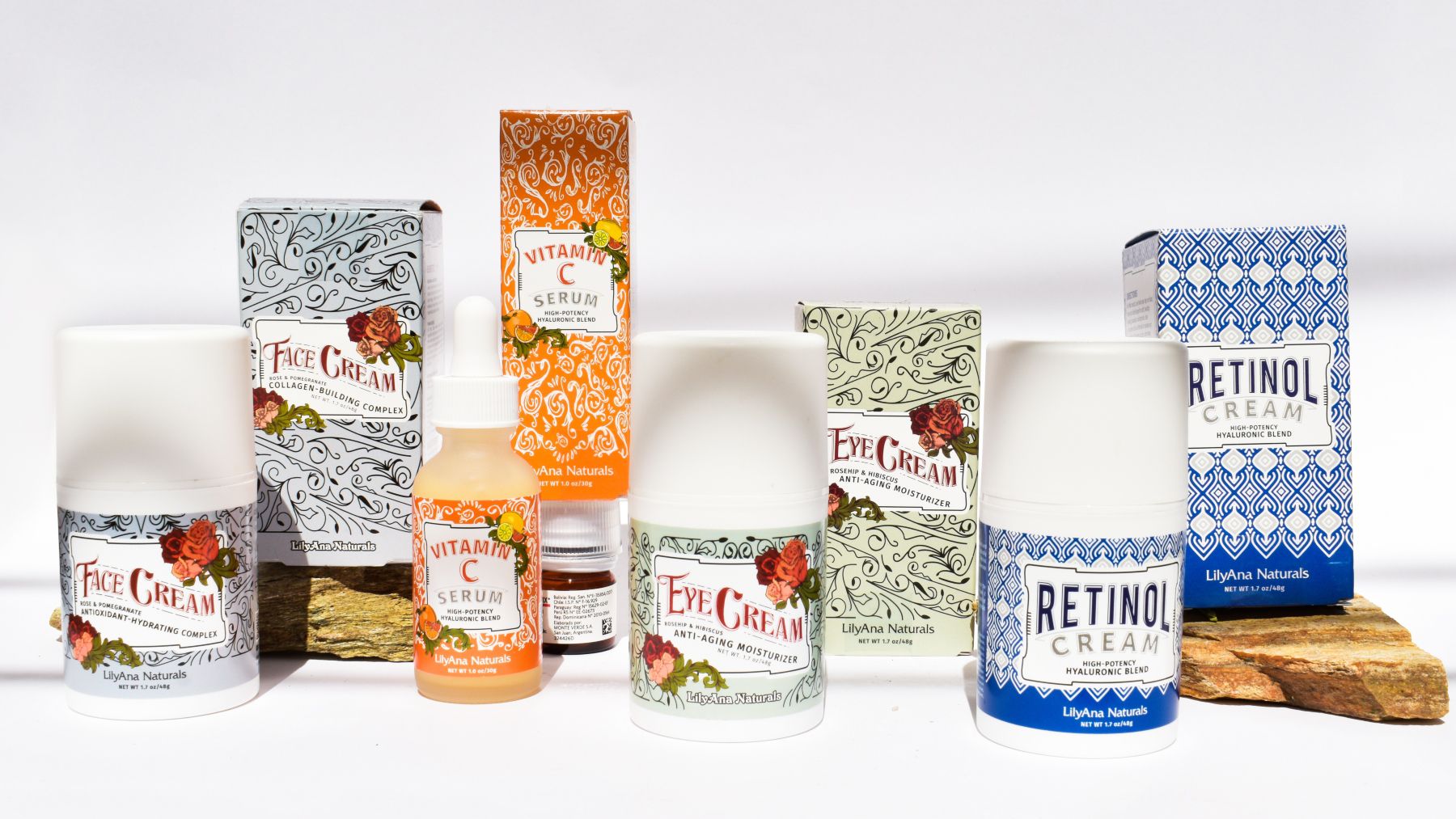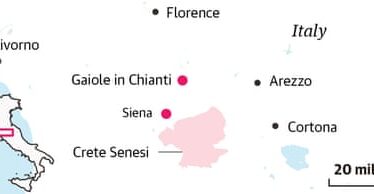
At the beginning of the skin care boom, in the mid to late 2010s, brands like Deciem and Drunk Elephant educated wide swathes of consumers about the ingredients that made up their skin care routines, like retinol and vitamin C. In a commercial, L’Oréal Paris even had actor Eva Longoria teach people how to pronounce “hyaluronic acid.”
Armed with this new knowledge, consumers went to Amazon to search for products that contained these keywords and were met with a wall of affordable brands, not found in any Walmart or drugstore, let alone Ulta or Sephora, capitalising on the craze. Amazon-only labels with anonymous founders like LilyAna Naturals, Baebody Beauty and TruSkin Naturals, collected tens of thousands of reviews and rose to the top of Amazon’s list of best-selling beauty and personal care products. They were also able to sell without much competition from many mainstream beauty brands, which mostly avoided Amazon.
But those streams are now crossing as newly-formed holding and investment companies and so-called Amazon aggregators snap up these Amazon-born brands, hoping to grow them on and off the platform. This investment interest has made it a great time to be a small Amazon beauty brand with good rankings on the site. But what happens next for them and their new owners is still murky.
Doing business on Amazon has always had its difficulties, as the platform can change how brands do business on the site with the flip of a switch. And now Amazon-born beauty brands have to compete with mainstream brands on the site. Expanding beyond Amazon is an option, but it’s still not clear whether these brands can make a long-term transition off the platform.
“Amazon native brands are generally people who understand Amazon and Amazon marketing and how to win on the platform more than [having the] traditional attributes of a strong beauty brand,” said Rich Gersten, a co-founder at investment firm True Beauty Ventures. About six years ago, he had considered investing in a buzzy Amazon-only beauty brand, envisioning the platform could be like QVC once was — a place where brands built awareness they then leveraged in other channels. At the time, he wasn’t convinced it would work.
Now that idea’s being tested, often with big investments.
The Age of the Amazon Aggregator
There are globally now at least 90 Amazon aggregators, 52 of which have collectively raised almost $15 billion since early 2020, according to Marketplace Pulse. (Category leader Thrasio has raised $3.4 billion.) These aggregators acquire brands with tens of thousands of reviews and first-page Amazon placements in a variety of categories. The aggregators then spruce up the brands and use data and technology to increase sales. Many aren’t transparent, at least on their public-facing sites, about which brands they’ve acquired.
Beauty, wellness and personal care brands will likely be well-represented in aggregator portfolios, according to an October 2021 survey by Fortunet, an investment banking firm that specializes in e-commerce M&A. Of Boosted Commerce’s over 40 brands, for example, about three quarters fall under those headings, like Simplified Skin, Asterwood Naturals and FoxyBae.
The company, co-founded in 2019 by serial investor and entrepreneur Keith Richman and Charlie Chanaratsopon, founder of the beleaguered accessories retailer Charming Charlie, has raised $380 million in capital and had 2021 revenue of over $150 million, said Richman, also the company’s chief executive.
Due to regulation and formulation issues, beauty and supplement businesses can be challenging. But Boosted finds those brands attractive because of their repeat purchase potential and because they are “meaningful” to people, said Richman.
Richman is looking beyond Amazon to envision building a modern-day P&G. He wants to “identify brands that we think represent bigger opportunities,” and says the goal is not to flip businesses.” About 30 percent of the brands in its current deal pipeline are not Amazon-first.
Its largest acquisition yet, made in January, is hair care and tools brand FoxyBae, which has over $32 million in annual revenue. The brand primarily sells in non-Amazon channels, including beauty sampling boxes, CVS, Target, and Urban Outfitters. Boosted hopes to leverage the brand’s existing wholesale connections to help build out its other brands beyond Amazon.
Growing On Amazon
But for Amazon brands to find that more far-reaching success, they must establish an identity outside the platform as well as maintain growth on Amazon itself.
Richman acknowledges that while Boosted has gotten “comfortable with it,” Amazon is potentially an “existential risk” to an aggregator business. It can remove a brand from its platform at any time as well as increase its own share of profits directly by changing the percentage of sales it charges and indirectly by fluctuating ad prices.
Review generation is crucial for growth on Amazon, yet it’s difficult.
“Legitimate review growth takes a long time,” said Elaine Kwon, a managing partner at Kwontified, an e-commerce management firm. In spring 2021, Amazon shuttered its Early Reviewer Program, leaving its invite-only Vine review program and newer one-tap buttons available for reviews. Kwon notes that about one in ten purchases results in a customer review.
Marketing on Amazon is also pricier than ever, as mass brands have directed their giant marketing budgets to the platform. As such, now Amazon’s beauty bestseller list is dominated by brands like CeraVe, Neutrogena and Dove. Labels like New World Naturals Brands’ Baebody Beauty, which once ruled that list, no longer have its products appear on it. (Baebody is slowly expanding at retail, including at JCPenney and iHerb.)
The pandemic changed everything. Amazon stopped allowing for lucrative brand promotions like lightning deals in the wake of shipping and supply chain disruptions. As brick-and-mortar retailers closed, mass brands focused their marketing dollars on discovery, putting them in direct competition with the Amazon natives, said New World Naturals Brands’ chief executive Shannon Curtin.
Brands are fighting to bid on commonly-searched keywords and even other brands’ names on Amazon’s ad platform in order to show up in searches, said Kwon.
“There’s a lot of discussion right now as to how do we support growth when every year we’re required to spend more and more on the same platforms just to do the same amount of business,” she said.
Growing Off Amazon
Then there are the non-Amazon marketing costs that these brands never had to worry about.
TruSkin, purchased by Wellbeam Consumer Health in October 2021, was primarily known for its vitamin C serum. It’s still in Amazon’s top ten beauty sellers with almost 100,000 ratings, but also now sells in Target, Walmart and grocery chains. As TruSkin tries to expand beyond the SKU that made it famous, it is investing in beauty box sampling programs and influencers. The brand uses influencers to “begin communicating around the breadth of our portfolio that can address several different skin issues and skin needs,” said Jessica Johnson, the associate director of brand management for TruSkin.
The brand may face an uphill battle: There are dozens of other vitamin C serums and clean beauty brands. LilyAna Naturals, its contemporary and competitor, is one of them.
RDM Partners purchased LilyAna in July 2020, and it’s now selling at CVS in addition to Amazon. RDM built out more of a background story for the brand, keeping the fun labels and calling out its small-town Mississippi roots. But it’s contending with the same growth and marketing issues, noted Retta Abraham, a managing partner at RDM and LilyAna’s chief executive. A moment of TikTok virality for its eye cream in 2021 provided a boost.
“We were very pleased with that outcome and the impact that it’s had to sell-through across all of our channels,” said Abraham.
People tend to search for solution-oriented products on Amazon, said LilyAna’s Abraham, which has been a boon for Amazon-native brands. But off the site, they can’t rely on having a product that’s a top-searched term on Amazon.
“That’s really still the largest percentage of our revenue, but over time the element that will create the most economic value for the brand itself will be through growth of the direct consumer and ownership of the customer base, which is done off Amazon.”



